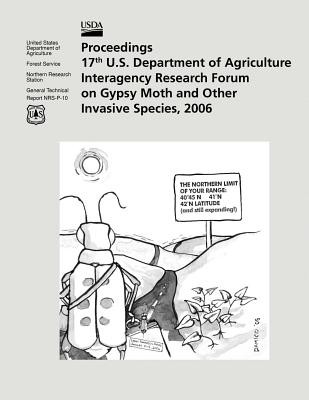
- We will send in 10–14 business days.
- Author: U S Department of Agriculture
- Publisher: CreateSpace Independent Publishing Platform
- Year: 2015
- Pages: 130
- ISBN-10: 1508428425
- ISBN-13: 9781508428428
- Format: 21.6 x 28 x 0.7 cm, minkšti viršeliai
- Language: English
- SAVE -10% with code: EXTRA
Proceedings 17th U.S. Department of Agriculture Interagency Research Forum on Gypsy Moth and Other Invasive Species, 2006 (e-book) (used book) | bookbook.eu
Reviews
Description
Japanese oak wilt (JOW) has been known since the 1930s, but in the last 15 years epidemics have intensifi ed and spread to the island's western coastal areas. The symbiotic ambrosia fungus Raffaelea quercivora is the causal agent of oak dieback, and is vectored by Platypus quercivorus (Murayama). This is the fi rst example of an ambrosia beetle fungus that kills vigorous trees. Mortality of Quercus crispula Blume was approximately 40 percent but much lower for associated species of Fagaceae, even though each species had a similar number of beetle attacks. It is likely that other oaks resistant to the fungus evolved under a stable relationship between the tree, fungus and beetle during a long evolutionary process. Quercus crispula was probably not part of this coevolution. This hypothesis was supported by the fact that P. quercivorus showed the least preference for Q. crispula, yet exhibited highest reproductive success in this species. On contrary, on the other oaks the index was almost one that guarantees a stable population dynamics for P. quercivorus.
EXTRA 10 % discount with code: EXTRA
The promotion ends in 21d.22:14:18
The discount code is valid when purchasing from 10 €. Discounts do not stack.
- Author: U S Department of Agriculture
- Publisher: CreateSpace Independent Publishing Platform
- Year: 2015
- Pages: 130
- ISBN-10: 1508428425
- ISBN-13: 9781508428428
- Format: 21.6 x 28 x 0.7 cm, minkšti viršeliai
- Language: English English
Japanese oak wilt (JOW) has been known since the 1930s, but in the last 15 years epidemics have intensifi ed and spread to the island's western coastal areas. The symbiotic ambrosia fungus Raffaelea quercivora is the causal agent of oak dieback, and is vectored by Platypus quercivorus (Murayama). This is the fi rst example of an ambrosia beetle fungus that kills vigorous trees. Mortality of Quercus crispula Blume was approximately 40 percent but much lower for associated species of Fagaceae, even though each species had a similar number of beetle attacks. It is likely that other oaks resistant to the fungus evolved under a stable relationship between the tree, fungus and beetle during a long evolutionary process. Quercus crispula was probably not part of this coevolution. This hypothesis was supported by the fact that P. quercivorus showed the least preference for Q. crispula, yet exhibited highest reproductive success in this species. On contrary, on the other oaks the index was almost one that guarantees a stable population dynamics for P. quercivorus.


Reviews